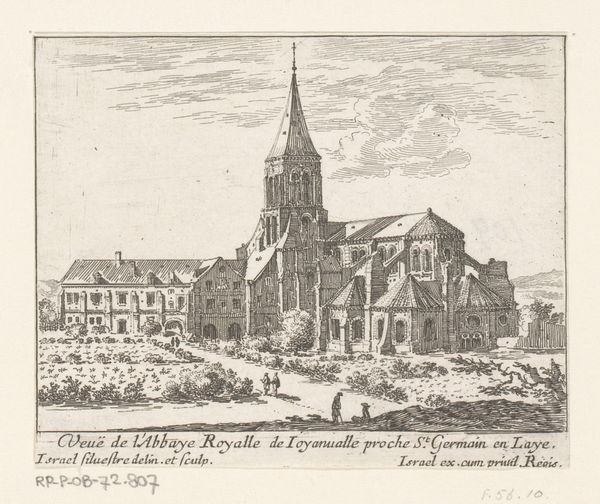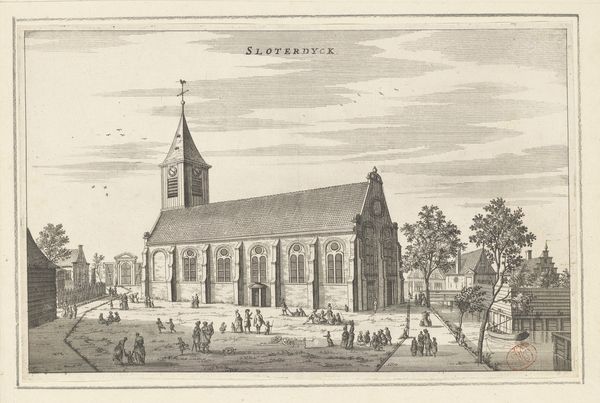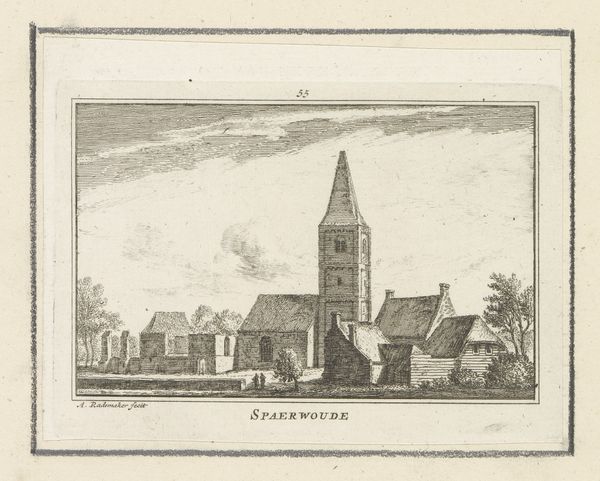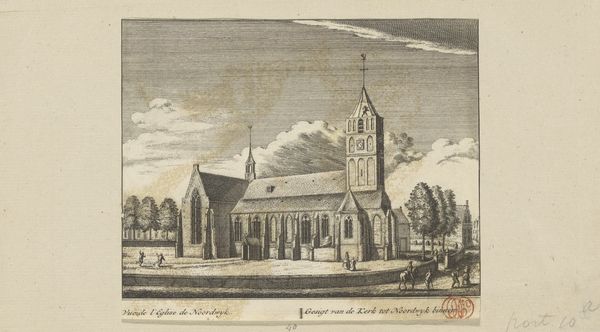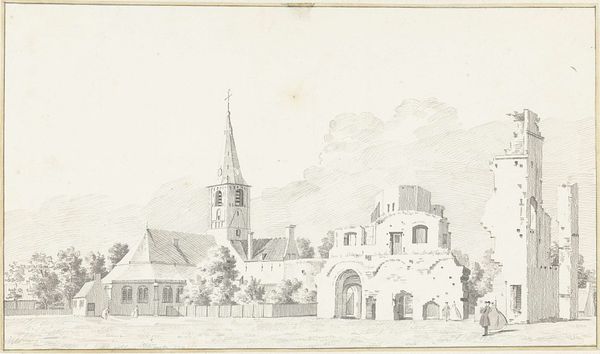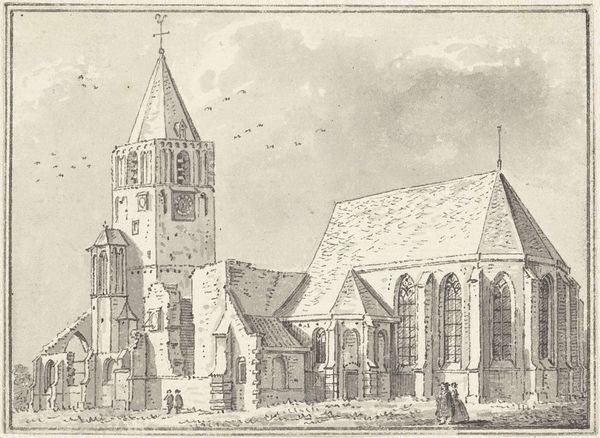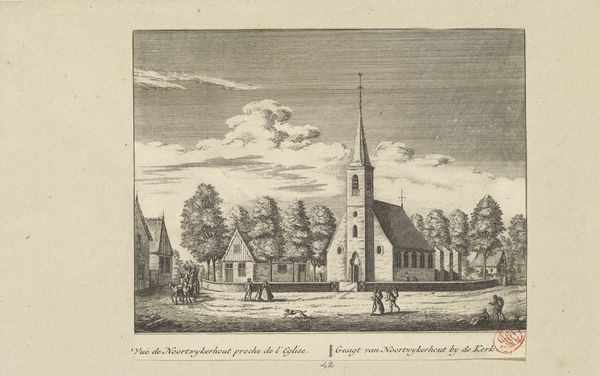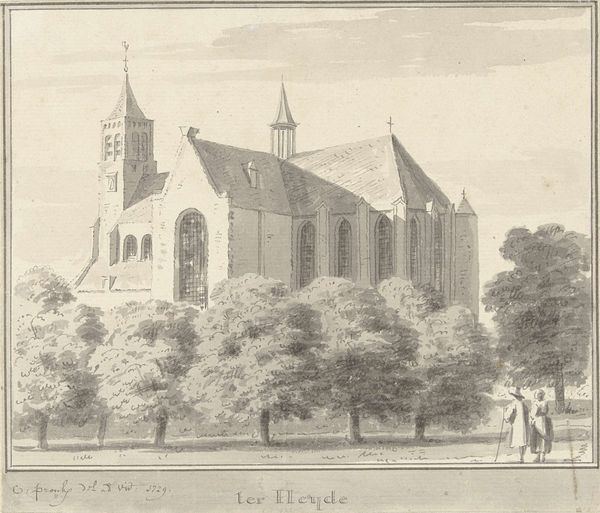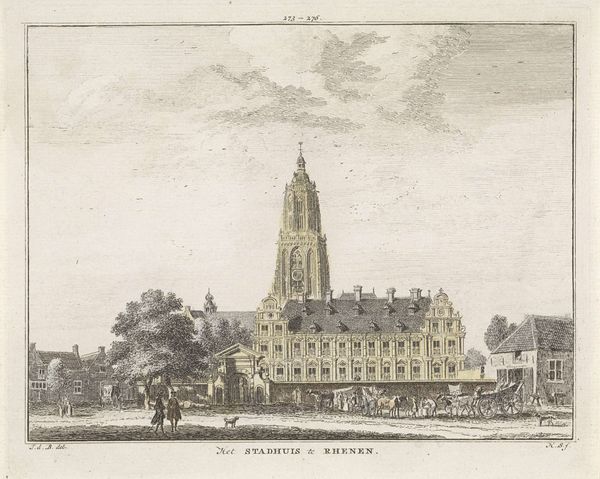
drawing, paper, ink
#
drawing
#
baroque
#
landscape
#
paper
#
ink
#
cityscape
Dimensions: height 123 mm, width 165 mm
Copyright: Rijks Museum: Open Domain
Cornelis Pronk rendered this drawing of the church in Rees, Germany, in 1750. Notice the meticulous strokes of pen and brush that define the architectural forms, which contrast to the figures depicted with looser, sketchy lines. The church, a complex of interconnected structures, dominates the composition, with lines converging to emphasize its height and grandeur. The texture and patterns of the brickwork are suggested with subtle variations in tone, creating depth and volume. This semiotic play, where architectural elements represent power and divine presence, aligns with the religious function of the building. Pronk’s technique destabilizes traditional expectations of architectural drawings, blending precision with artistic license. It prompts us to see the church not just as a building, but as a cultural signifier laden with historical and religious meaning. The formal qualities of the work extend beyond mere aesthetics, inviting us to engage with broader cultural and philosophical discourses.
Comments
No comments
Be the first to comment and join the conversation on the ultimate creative platform.
